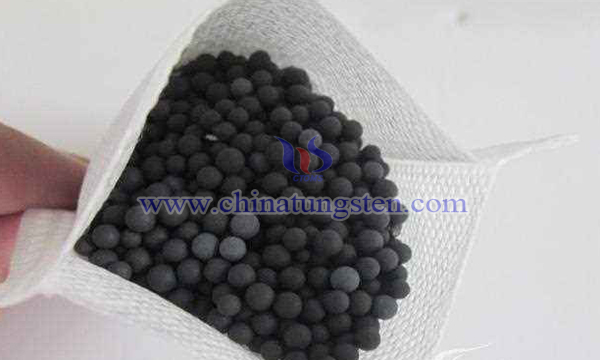Vanadium-doped Nano Tungsten Oxide Adsorbent
- Details
- Category: Tungsten Information
- Published on Thursday, 08 August 2019 22:41
137Cs is the main heat-releasing nuclide in high-level radioactive waste liquor. If it can be separated, the radioactive level of high-level radioactive waste liquor will be greatly reduced, and the cost of subsequent treatment of radioactive waste liquor and solid waste disposal will be reduced. In addition, 137Cs can be used as gamma radiation source in breeding, food irradiation storage, sterilization of medical devices, cancer treatment and various instrumentation fields. Therefore, the separation of 137Cs from high-level radioactive waste liquor has been one of the hotspots in the field of spent fuel reprocessing at home and abroad, and also an important goal in the process of reprocessing.

In recent years, chemists hope to expand the application of inorganic materials in the field of high-level radioactive waste liquid treatment through effective combination and regulation of such factors as skeleton type, hole shape, channel distribution, cavity volume and charge of structural units. Doping modification is an effective method to improve the properties of inorganic materials at present. Researchers have adopted a preparation method of vanadium-doped nano tungsten oxide adsorbent material. Its characteristic is that the transition metal ion vanadium is introduced into WO6 octahedral structure to make the octahedral structure have larger specific surface area and change the internal electrons of nano tungsten oxide. The changes of alignment, voids and defects can significantly improve the adsorption properties of nano tungsten oxide for Cs+. The specific operations are as follows:
(1)Tungsten hexachloride solution with 0.2-0.3 mol/L concentration of 4-10 phr, preferably 6-8 phr, was placed in polytetrafluoroethylene reactor, 12-20 phr of secondary distilled water was added, and 12-15 phr of secondary distilled water was selected, stirring to make it fully dissolved;
(2)1-10 parts of sodium metavanadate solution with concentration of 0.06-0.6 mmol/L were added to the above solution, and the optimum solution was 4-8 parts. Continue stirring and mix well.
(3)1-5 hydrochloric acid solutions with concentration of 3-5 mol/L, 2-3, 26-33 ammonium sulfate solutions with concentration of 0.4-0.5 mol/L and 28-30, were added to 100 mL polytetrafluoroethylene reactor and stirred for 0.5-1 H.
(4)Seal the PTFE reactor and place it in the formula oven. The heating and cooling rates are 1-2 ℃/min, respectively. The reactor is taken out and cooled to room temperature by hydrothermal treatment at 150-200 ℃ and 170-180 ℃ for 24-48 H. The reaction products are washed to neutral with distilled water and placed in the oven at 80-100 ℃, respectively. Vanadium-doped tungsten oxide nanomaterials were obtained by drying for 24-48 H.
By introducing transition metal ion V to fine tungsten oxide crystal structure, a new porous material with smooth channel, high voidage and stable physical and chemical properties is obtained, which can realize free exchange of cesium ions in a large enough channel space, significantly improve the adsorption capacity of this material for Cs+ ions, and solve the existing inorganic ion exchange materials. The relatively low ion exchange capacity of materials to target nuclides is caused by the small pore size, the poor transport of target ions and even the blockage of channels.
- Tungsten Oxide Manufacturer & Supplier, Chinatungsten Online: www.tungsten-oxide.com
- Tungsten News & Prices of China Tungsten Industry Association: www.ctia.com.cn
- Molybdenum News & Price: news.molybdenum.com.cn
- Tel.: 86 592 5129696; Fax: 86 592 5129797; Email: sales@chinatungsten.com



 sales@chinatungsten.com
sales@chinatungsten.com